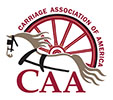
- Wrench which fits the oil cap unfortunately all too often this is missing, if so, have one made at a machine or welding shop. A deep socket wrench can usually be gotten to fit the inner nuts.
- Block wheels before jacking, remove wheel, clean all parts thoroughly, especially the oil reservoir which is the deep groove inside of the box.
- Inspect parts for condition, check axle, box, oil cup, cullet and nuts for corresponding numbers or letters.
- It is sometimes advisable to replace both washers, the washer at the oil cup is especially important as leakage here will result in loss of oil and eventual trouble.
- Place cardboard or paper on floor, set first washer in position at collar, apply oil freely on axle, oil inside of box filling reservoir to capacity. A pump type oil is a great convenience here. Mr. G. N. Hooper recommends the best salad oil, Underhill castor oil and other authors a pure oil. A major oil company’s research department informed me that any of the present motor oils are superior to oil oil and recommended SAE #20 none detergent. The important thing is that oil be used and the proper level maintained.
- Set wheel on axle arm carefully, having collet and nut close at hand (a wheel may slide off axle).
- Push wheel back to collar, apply oil to collet bearing surface in box, insert collet, make up nut finger tight, rotate wheel and make up nut slowly with wrench using little pressure, when wheel starts to bind back off nut. There is a difference in opinion on the setting of the first nut which bears against the collet. Some claim the nut should be backed off just enough so that the wheel is absolutely free; others one eighth, one quarter to one half beyond that. The threads on the axle arm for the collet nut number about eight per inch for a Drag. One half turned on this will produce 1/16″ inch end play which is quite a lot. Excessive end play creates a hammering effect which can damage the collet.
- Set lock nut in position, tighten with moderate pressure, check that wheel turns freely. This nut will tighten in the opposite direction of the first.
- Insert cotter pin, do not spread cotter pin as the oil cup will prevent this from coming out of place.
- Tilt oil cup (also called axle cap) to angle of about 45 degrees, fill with oil, rotate wheel counter clockwise, made up oil cup rapidly to prevent loss of oil. Wipe oil off front and back of hub with rag soaked with benzine. On rare occasions, you will find oil cups with left hand thread, in which case rotate wheels clockwise.
- Rotate wheel, check freeness, lower wheel and place clean cardboard or paper on floor so leakage in front and back of hub can be noted. Excessive oil will drain down back of collar, there should be no leakage at oil cup.

Advice from “Essay on the Suspension of Carriages” by William Philipson in The Carriage Journal, Vol. 7, No.1
